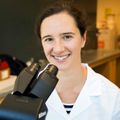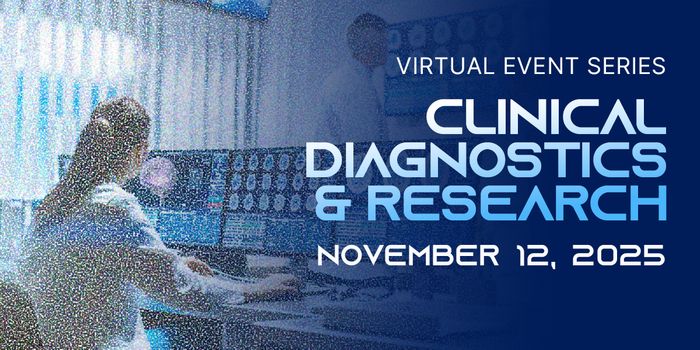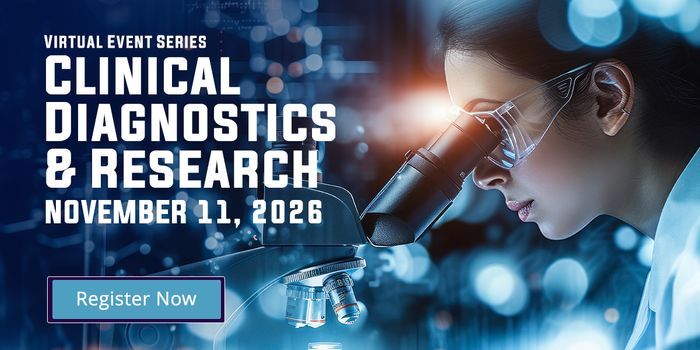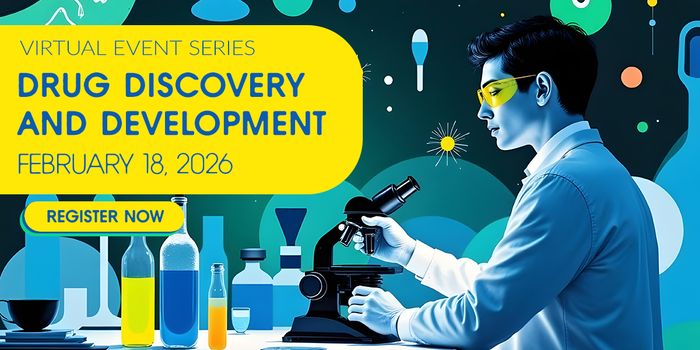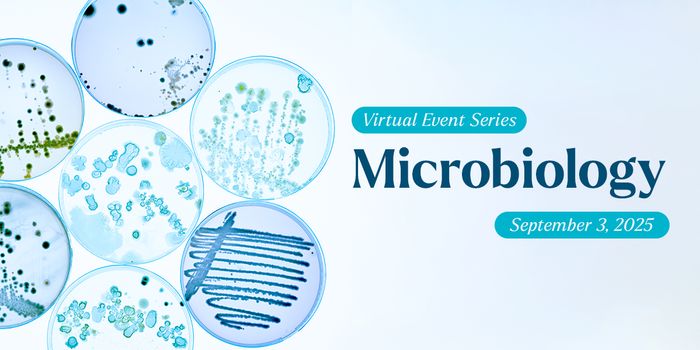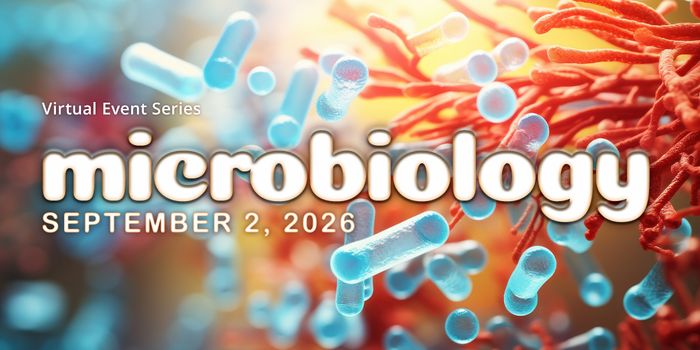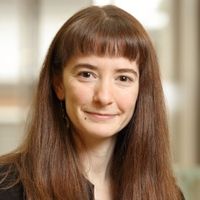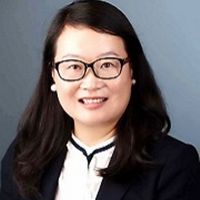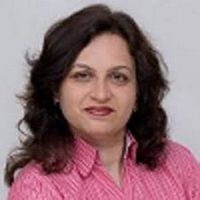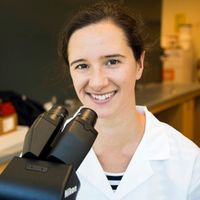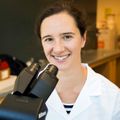Tammy Germini, MBA, MT(ASCP), is the Clinical Pathology Operations Director at Geisinger Health System in Central Pennsylvania. After earning a BS in Medical Technology from the University of North Carolina-Greensboro, she attended Moses H. Cone School of Medical Technology, and ...
See more-
Tammy Germini
-
Sammy Datwani
Dr. Datwani joined Labcyte Inc., in 2007 and is responsible for leading internal research programs and managing the advanced developments for the creation of new products and capabilities for the company in the arena of acoustic droplet ejection. Dr. Datwani has over twenty ...
See more
Laboratory Testing & Automation Virtual Event Series 2019


Our 3rd Annual Laboratory Testing & Automation Virtual Event is now available On-Demand! Laboratory Testing & Automation is a multi-disciplinary approach benefiting from technologies in the lab that facilitate new and improved processes. The event will remain open 6 months from the date of the live event. The webinars will be available for unlimited on-demand viewing.
Topic's for this years event included:
- Life Sciences
- Droplet Based Microfluidics
- Clinical Diagnostics
- Empowering Laboratory Automation
- Next Generation Sequencing
Continuing Education
LabRoots is approved as a provider of continuing education programs in the clinical laboratory sciences by the ASCLS P.A.C.E. ® Program. By attending this event, you can earn 1 Continuing Education credit per presentation for a maximum of 14 credits.
Use #LRlabauto to follow the conversation!
Agenda Share
-
MAY 30, 2019 1:30 PM PDT
Hybrid Tissue-Chips: Modeling Drug Delivery and Disease with Novel Microfluidics for Living Tissue
Rebecca Pompano, PhD
Assistant Professor in the Departments of Chemistry and Biomedical Engineering, University of VirginiaBIOGRAPHY -
MAY 30, 2019 12:00 PM PDT
3D Microfluidic Technology for Empowering Biomedical Research
-
-
MAY 30, 2019 10:30 AM PDT
Keynote Presentation: Novel Computer Vision System for Integrated Biomolecule and Cell Assays
Amar Basu, PhD
Vice President of Engineering Research and Digital Assays, Bioelectronica Corporation, Associate Professor, Wayne State UniversityBIOGRAPHY -
MAY 30, 2019 9:00 AM PDT
Keynote Presentation: Diagnosing Disease with Rare Circulating Extracellular Vesicles: Finding Heterogeneous, Nanoscale Needles in a Nanoscale Haystack
David Issadore, PhD
Associate Professor of Bioengineering and Electrical & Systems Engineering, University of PennsylvaniaBIOGRAPHY -
MAY 30, 2019 9:00 AM PDT
Lab on a Chip Technologies for Drug Discovery
Katherine Elvira, MSci, PhD, ARCS
Assistant Professor, Canada Research Chair in New Materials and Techniques for Health Applications, University of VictoriaBIOGRAPHY -
MAY 30, 2019 7:30 AM PDT
Keynote Presentation: Quantum Diagnostics: From Single-Cells to Single-Molecules
Dino Di Carlo, Ph.D.
Professor and Chair, Department of Bioengineering University of California, Los AngelesBIOGRAPHY -
MAY 30, 2019 6:00 AM PDT
Improved Cancer Tracking Through Precision Quantification of Circulating Nucleic Acid Biomarkers
- Clinical Diagnostics
-
MAY 30, 2019 6:00 AM PDT
Improved Cancer Tracking Through Precision Quantification of Circulating Nucleic Acid Biomarkers
-
MAY 30, 2019 9:00 AM PDT
Keynote Presentation: Diagnosing Disease with Rare Circulating Extracellular Vesicles: Finding Heterogeneous, Nanoscale Needles in a Nanoscale Haystack
David Issadore, PhD
Associate Professor of Bioengineering and Electrical & Systems Engineering, University of PennsylvaniaBIOGRAPHY -
- Life Sciences
-
MAY 30, 2019 7:30 AM PDT
Keynote Presentation: Quantum Diagnostics: From Single-Cells to Single-Molecules
Dino Di Carlo, Ph.D.
Professor and Chair, Department of Bioengineering University of California, Los AngelesBIOGRAPHY -
MAY 30, 2019 9:00 AM PDT
Lab on a Chip Technologies for Drug Discovery
Katherine Elvira, MSci, PhD, ARCS
Assistant Professor, Canada Research Chair in New Materials and Techniques for Health Applications, University of VictoriaBIOGRAPHY -
MAY 30, 2019 10:30 AM PDT
Keynote Presentation: Novel Computer Vision System for Integrated Biomolecule and Cell Assays
Amar Basu, PhD
Vice President of Engineering Research and Digital Assays, Bioelectronica Corporation, Associate Professor, Wayne State UniversityBIOGRAPHY - Empowering Laboratory Automation
-
MAY 30, 2019 12:00 PM PDT
3D Microfluidic Technology for Empowering Biomedical Research
-
MAY 30, 2019 1:30 PM PDT
Hybrid Tissue-Chips: Modeling Drug Delivery and Disease with Novel Microfluidics for Living Tissue
Rebecca Pompano, PhD
Assistant Professor in the Departments of Chemistry and Biomedical Engineering, University of VirginiaBIOGRAPHY
POSTER SUBMISSION GUIDELINES
Virtual poster sessions offer the opportunity to present data to a global audience via a PDF poster and video summary, and discuss results with interested colleagues through email. Posters should be submitted as a PowerPoint file. Presentations should incorporate illustrative materials such as tables, graphs, photographs, and large-print text. This content is not peer-reviewed. Submission is free.
SUBMIT YOUR ABSTRACT
Enter the following information to this Submission Form:
- Poster Title
- Your Name
- Your Institution
- Your Email
- Abstract describing the poster
All submitted abstracts will be reviewed and decisions regarding acceptance will be made as abstracts are received. You will be notified within one week of receipt about acceptance. Further details and registration materials will be provided at that time. You do not have to be present in order to have a poster displayed. Only those abstracts approved by LabRoots may display posters at this event.
If accepted, you will also have the opportunity to record a 3-5 minute summary video for each poster. LabRoots will work with each individual to create these videos. Video links and email contact information will be included on each poster displayed.
Questions? Email Posters@LabRoots.com
LabRoots Policy
Speakers Share
-
Amar Basu, PhD
Vice President of Engineering Research and Digital Assays, Bioelectronica Corporation, Associate Professor, Wayne State University
BIOGRAPHY
-
Dino Di Carlo, Ph.D.
Professor and Chair, Department of Bioengineering University of California, Los Angeles
BIOGRAPHY
-
Megan Dueck, PhD
Chief Scientific Officer, COMBiNATi
BIOGRAPHY
-
Katherine Elvira, MSci, PhD, ARCS
Assistant Professor, Canada Research Chair in New Materials and Techniques for Health Applications, University of Victoria
BIOGRAPHY
-
Mei He, PhD
Assistant Professor, Department of Chemistry, The University of Kansas
BIOGRAPHY
-
Shonali Paul, MBA
Chief Operating Officer, CloudLIMS
BIOGRAPHY
-
Rebecca Pompano, PhD
Assistant Professor in the Departments of Chemistry and Biomedical Engineering, University of Virginia
BIOGRAPHY
-
Analytik Jena
Analytik Jena is a provider of instruments and products in the areas of analytical measuring technology and life science. Its portfolio includes the most modern analytical technology and complete systems for bioanalytical applications in the life science area. Comprehensive ...
See more -
Metrohm USA
Metrohm offers a complete line of analytical laboratory and process systems for titration, ion chromatography, electrochemistry and spectroscopy. From routine moisture analysis to sophisticated anion and cation quantification, we are ready to help you develop your method and ...
See more
Event Series

Laboratory Automation Virtual Event Series 2026

Laboratory Automation Virtual Event Series 2025

Laboratory Automation Virtual Event Series 2024

Laboratory Automation Virtual Event Series 2023

Laboratory Automation Virtual Event Series 2022

Analytical Chemistry & Separation Sciences Virtual Event Series 2021

Laboratory Automation Virtual Event Series 2021

Analytical Chemistry & Separation Sciences Virtual Event Series 2020

Laboratory Automation & Informatics Virtual Event Series 2020

Analytical Chemistry Virtual Event Series 2019

Analytical Chemistry Virtual Event Series 2018

Lab Automation Virtual Event Series 2018







